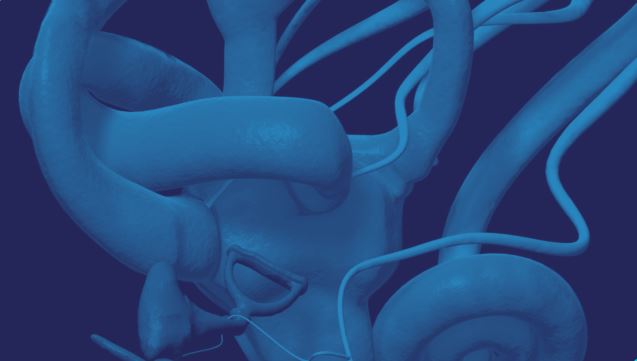
Image credit: Interacoustics
The vestibular system (inner ear and brain pathways) has a primary role of providing visual stability associated with head movement through the vestibular ocular reflex (VOR). The VOR is able to provide visual stability by causing the eyes to move in the opposite direction of a head turn or head tilt.
For instance, if a head is turned right, the VOR causes the eyes to move to the left and if a head is turned to the left, the VOR causes the eyes to move right. Without this essential reflex, head movement would induce visual blurring or dizziness. Because of this, most vestibular testing revolves around stimulating the inner ears with movement or temperature change while closely measuring the VOR response with infrared video goggles. Most infrared video goggles are only capable of measuring vertical or horizontal eye movements and are unable to measure a torsional (twisting) type eye movements. This is not ideal because the VOR has horizontal, vertical, and torsional eye components depending on the type of head movement. This renders the clinician unable to accurately measure the torsional component.
This is problematic for several reasons. The most common inner ear condition, benign paroxysmal positional vertigo (BPPV), causes eye movement or nystagmus that has a torsional component in most cases. Also, one of the otolith organs, the linear sensors of the inner ear, generates a torsional eye movement in response to head tilt to maintain visual stability.
Assessing Vestibular Function
The great news is that the researchers at Johns Hopkins in Baltimore Maryland have created software that enables infrared video goggles to record torsional eye movement. They are primarily using this as a test to measure the function of one of the otolith organs called the utricle.
The utricle senses linear motion and in-turn gravitational force during head tilt. With a head tilt to the side towards one’s shoulder (roll plane), the utricle in conjunction with the semicircular canals (angular sensors) causes the eyes to twist in the opposite direction of the head movement to provide visual stability (ocular counter roll). With a sustained head tilt to the side, the utricle is all that allows for continued visual stability by sensing gravitational force and maintaining the ocular counter roll. The semicircular canals only assist with the initial angular component of the head tilt. With this new software, researchers have been able to record the torsional component, or ocular counter roll, when tilting a subject’s head to the side to obtain a measure of utricle function.
Researchers have found that in the acute phase of peripheral vestibular (inner ear) dysfunction in particular individuals do not generate the appropriate ocular counter roll when their head is tilted toward the affected ear, indicative of utricle dysfunction. They have also found that as a subject’s brain learns to better deal with the inner ear dysfunction through a process called compensation, this ocular counter roll abnormality is no longer observed.
The ability to record torsional eye movement could make ocular counter roll testing a useful clinical measure to track how someone is compensating for an inner ear deficit. Also, this test could be used to support the diagnosis of dysfunction of the utricle with other clinical measures like vestibular evoked myogenic potential (VEMP), or to enable recording of the torsional nystagmus in patients with BPPV.
The ocular counter roll test is a new measure enabled by the development of new software thanks to the diligent research from those at Johns Hopkins. This new capability has multiple positive implications in our ability to better detect and measure recovery from inner ear disorders, particularly dysfunction of the utricle. It will be exciting to see the continued research and clinical implications moving forward.
*Image courtesy Interacoustics






